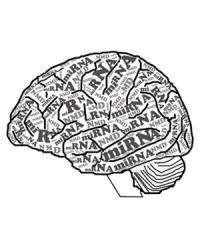Of frogs, chickens and people: Highly conserved dual mechanism regulates both brain development, function

Researchers at the University of California, San Diego School of Medicine have uncovered new details of an unusual biological mechanism in the brains of diverse species that not only helps regulate how their brains develop, but also how they function later in life. The discovery could lead to new biomarkers for specific neurological diseases in humans and, possibly, the development of drugs to cure them.
The research, by Miles F. Wilkinson, PhD, professor of reproductive medicine and a member of the UCSD Institute for Genomic Medicine, and colleagues, is published in the May 20 issue of the journal Molecular Cell.
Messenger ribonucleic acid (mRNA) is one of a family of molecules that help transcribe genetic information (DNA) into the construction of proteins essential to life. Nonsense-mediated mRNA decay or NMD is a sort of quality control mechanism used by cells to eliminate errant mRNAs that prematurely terminate these translations. It's vital to the normal development of the brain and nervous system. When NMD doesn't work correctly, the result in humans can be a range of neurological conditions from mental retardation to attention-deficit disorder, schizophrenia and autism.
In recent years, scientists have discovered that NMD also regulates normal transcriptions in neural cells, suggesting it has a functional, on-going importance. "Having a dual role is unusual. I can't really think of a known, analogous system," said Wilkinson. "We don't have evidence that these roles are complementary. Rather, we think it's an instance where nature has co-opted one system to also accomplish something else. Whether quality control or regulation of gene expression came first is anybody's guess."
Given the over-arching necessity of NMD (the mechanism is found in all eukaryotic life forms, from yeast to humans) and its role in the healthy development and functioning of neural systems, Wilkinson and colleagues sought to determine if NMD itself was regulated. They discovered that a neural circuit involving a microRNA called miR-128 represses NMD activity during embryonic brain development in species as diverse as frogs, chickens and mammals. MicroRNAs are molecules that regulate mRNAs post-translation, typically repressing or turning off genes.
Wilkinson said the research alters what's known about how new proteins are made at specific developmental stages of life:
"The classical paradigm is that development is dictated at the level of transcription. There's a burst of transcription from specific genes at specific points of development, leading to the production of mRNAs encoded by those genes and then the proteins themselves. Our data provide evidence for post-transcriptional control. The concept isn't new, but the discovery of two 'negative' post-transcriptional pathways – both NMD and miRNAs inhibit gene expression – converging to regulate neural development and function is."
How do two negatives equal positive regulation? Wilkinson said miR-128 appears to be dramatically up-regulated during neural development, which represses NMD and thus "releases the brakes that NMD applies to its target transcripts. The result is that encoded proteins can be produced at high levels."
In the future, Wilkinson said miR-128 levels might be usable biomarkers for specific neurological diseases. And by developing drugs that modulate miR-128 function, Wilkinson said these "neurological diseases could be potentially cured. The same therapeutic potential could also be said for NMD itself. A subset of individuals with neurological diseases may have hyper- or hypo-NMD. This might be dealt with by manipulating miR-128 levels or by targeting other factors important for NMD."














